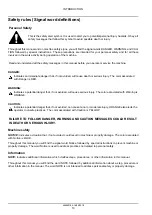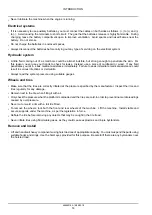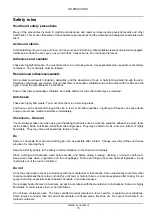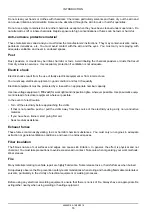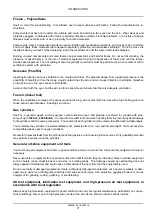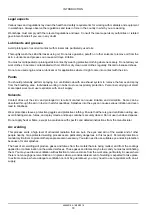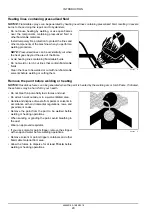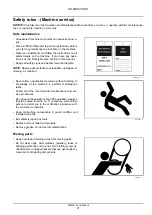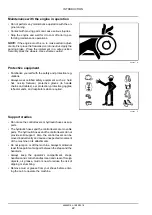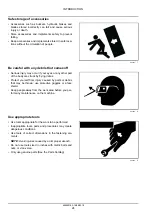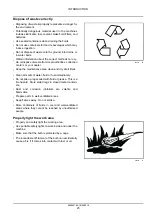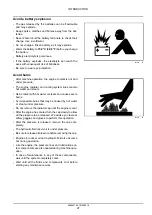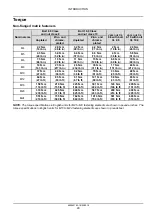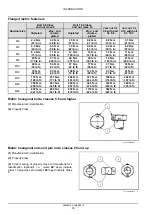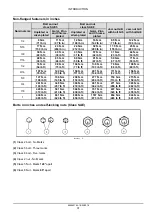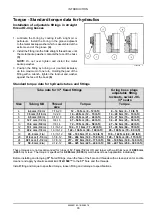
INTRODUCTION
Legal aspects
Various laws and regulations lay down the health and safety requirements for working with materials and equipment
in workshops. Always observe the regulations and laws in force in the country in which you are working.
Workshops must comply with the relevant regulations and laws. Consult the local supervisory authorities or related
government bodies if you are in any doubt.
Lubricants and greases
Avoid prolonged or recurrent contact with mineral oils, particularly used oils.
Thoroughly wash the skin after tasks using oil. Do not use gasoline, paraffin, or other solvents to remove oil from the
skin. Lubricants and greases can cause mild eye irritation.
You must avoid repeated or prolonged skin contact by wearing protective clothing where necessary. Do not allow your
work clothes to become contaminated with oil. Wash or dry clean work clothes regularly. Discard oil-soaked shoes.
Do not use used engine oil as a lubricant or for applications where it might come into contact with the skin.
Paints
You should preferably perform spraying in a ventilated cab with an exhaust system to remove the fumes and spray
from the breathing area. Individuals working in cabs must use respiratory protection. Personnel carrying out small-
scale repair work must use respirators with an air supply.
Solvents
Contact dries out the skin, and prolonged or recurrent contact can cause irritation and dermatitis. Some can be
absorbed through the skin in toxic or harmful quantities. Splashes into the eyes can cause serious irritation and even
lead to blindness.
Wear protective sleeves, protective goggles and protective clothing. Ensure that there is good ventilation during use,
avoid inhaling smoke, fumes, and spray clouds, and keep containers securely closed. Do not use in enclosed spaces.
Do not apply heat or flame, except in accordance with specific and detailed instructions from the manufacturer.
Arc welding
This process emits a high level of ultraviolet radiation that can burn the eyes and skin of the welder and of other
people nearby. Gas-protected welding processes are particularly dangerous in this respect. Personal protection is
mandatory. Barriers to protect other people are also necessary. You also need to use suitable eye and skin protection
because of metal splashes.
The heat of arc welding will produce gases and fumes from the metals that are being melted, and from the coatings
applied to or contamination on the worked surfaces. These gases and fumes may be toxic and you must avoid inhaling
them. You may need to use ventilation with extraction to remove smoke from the work area, particularly in cases where
there is not enough general ventilation or in places where a considerable amount of welding is expected to take place.
In extreme cases, where adequate ventilation cannot be guaranteed, you may need to use respirators with an air
supply.
48096018A 18/05/2018
18







